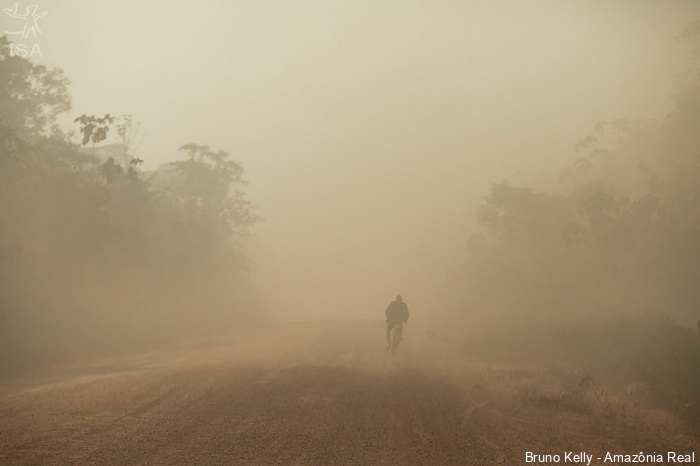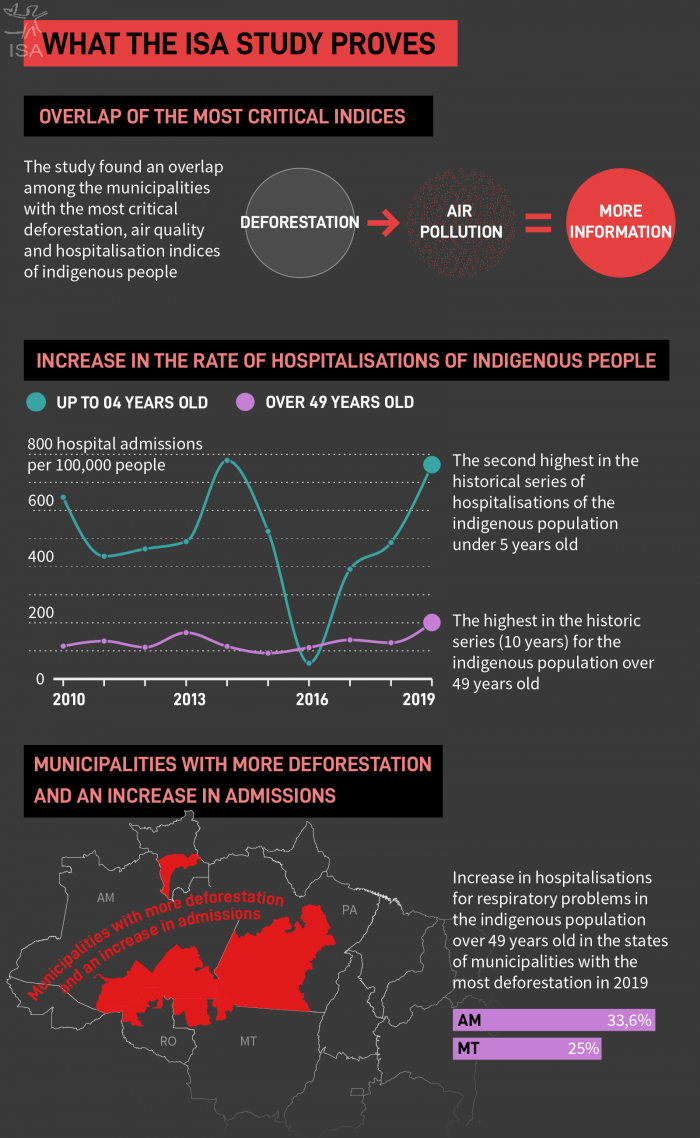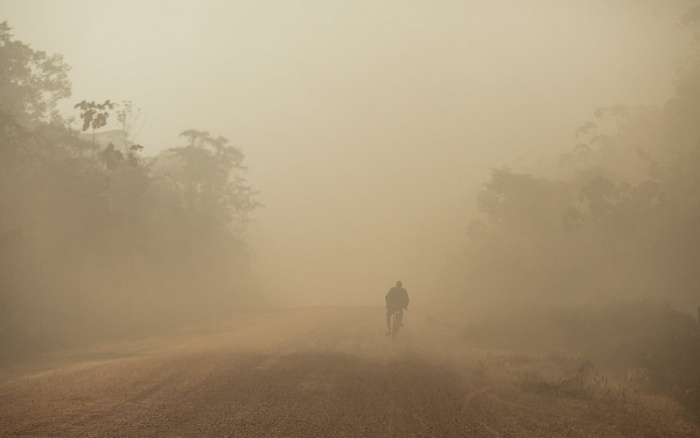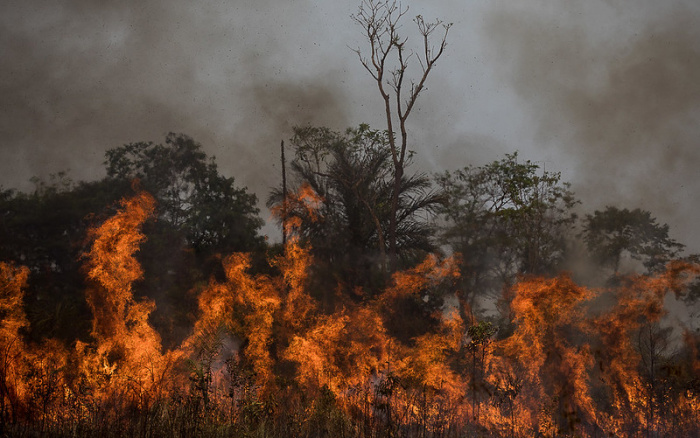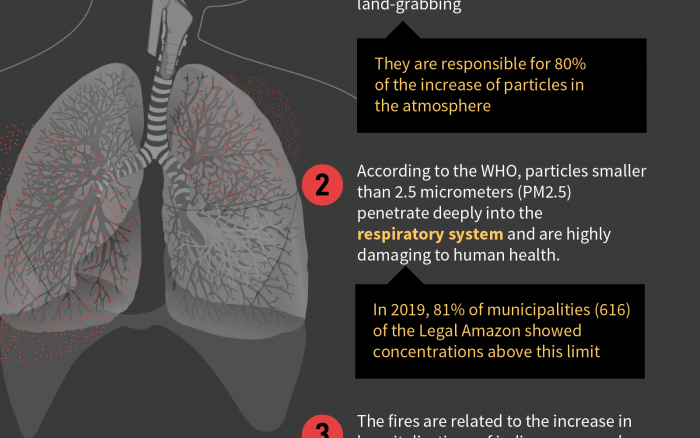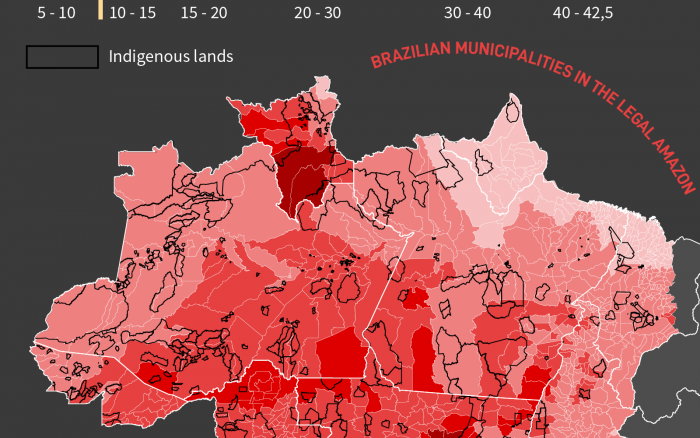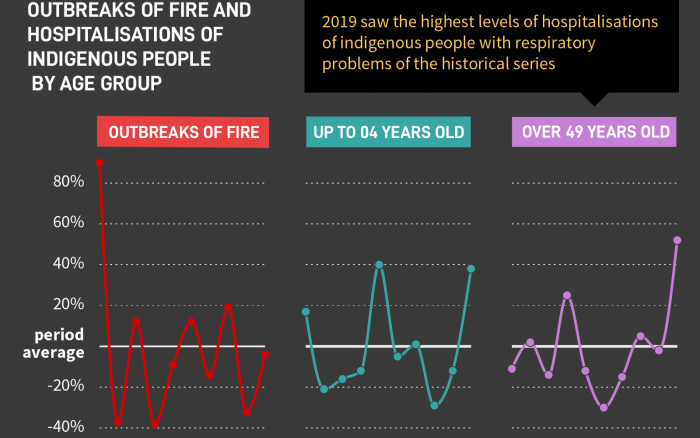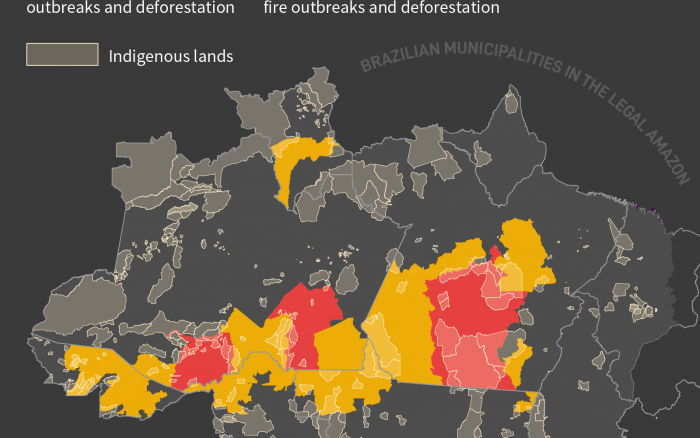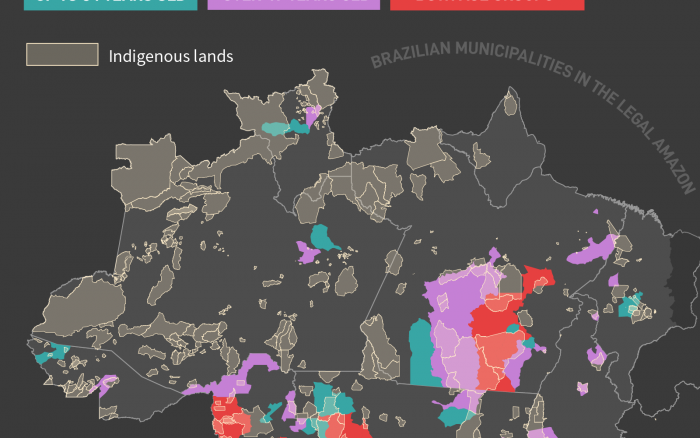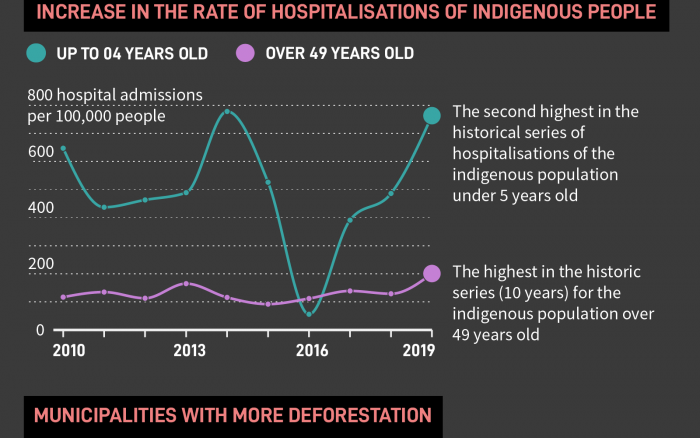Você está na versão anterior do website do ISA
Atenção
Essa é a versão antiga do site do ISA que ficou no ar até março de 2022. As informações institucionais aqui contidas podem estar desatualizadas. Acesse https://www.socioambiental.org para a versão atual.
Smoke from fires is driving hospitalisations of indigneous people, study shows
terça-feira, 25 de Agosto de 2020 
Esta notícia está associada ao Programa:
The fire season, a product of illegal deforestation, coincides with a 25% increase in hospital admissions for respiratory problems; in 2020, the pandemic has led to heightened risk for indigenous people
Illegal fires in the Brazilian Amazon have a direct impact on the health of the region’s indigenous people. A new ISA study indicates a 25% increase on average in hospital admissions of indigenous people over the age of 50 for respiratory problems as a result of the fires. It is proof that the lack of monitoring and the encouragement to destroy the forest directly affects the health of those in the surroundings, especially indigenous people. Download the study here.
With the arrival of the fire season in the Amazon at the height of the Covid-19 pandemic, the study is a warning about the high risk illegal forest fires pose to native populations. In addition to comorbidities, which can aggravate the clinical condition of a Covid-19 patient, hospitalisations resulting from the fires could put further pressure on public hospitals already overburdened by patients infected with the new coronavirus. Indigenous people are particularly at risk, as the death rate by Covid-19 is 1.5 times higher than the national average.
“Most of the land deforested in 2020, and 45% of the forest cut down in 2019, was not burned and serves as fuel for this year’s fires”, says Antonio Oviedo, one of the study’s researchers and an advisor to ISA. “The fire could worsen the current Covid-19 crisis in the Amazon, where infection rates are still high”, he says.
The ISA researchers identified that, between 2010 and 2019, the peak of hospital admissions of indigeneous peoples for illnesses such as asthma, pneumonia, influenza, acute bronchitis and other acute respiratory infections coincided with the periods of forest fires. The reason is the high concentration of airborne particules, which are harmful to the pulmonary bronchioles and alveoli, the structures which allow us to breathe.
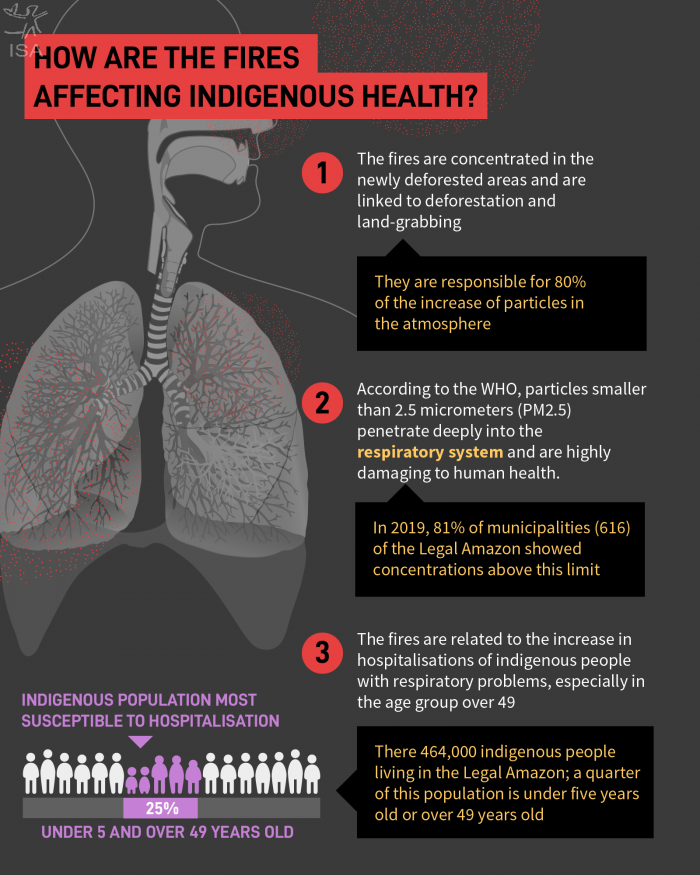
When the forest burns, the smoke carries PM2.5 particles in suspension. In 616 municipalities of the Amazon (81% of the municipalities analyzed), the concentration of particles was above levels considered safe by the World Health Organization (WHO). The highest concentrations of PM2.5 are in the state of Rondonia, centre-north Mato Grosso, southwest Pará, southeast Amazonas, the region of Manaus and Roraima.
“Although we call it a particle, it is microscopic and can penetrate deeply into the lung. This causes inflammation, a systemic effect, headaches, body pain, all the symptoms of a respiratory infection,” explains Sandra Hacon, of the Oswaldo Cruz Foundation (Fiocruz). According to Hacon, the smaller the particle, the worse its effect. In addition, the longer the exposure time, the greater the health risk. The study showed higher hospital admission rates in the region known as the arc of deforestation.
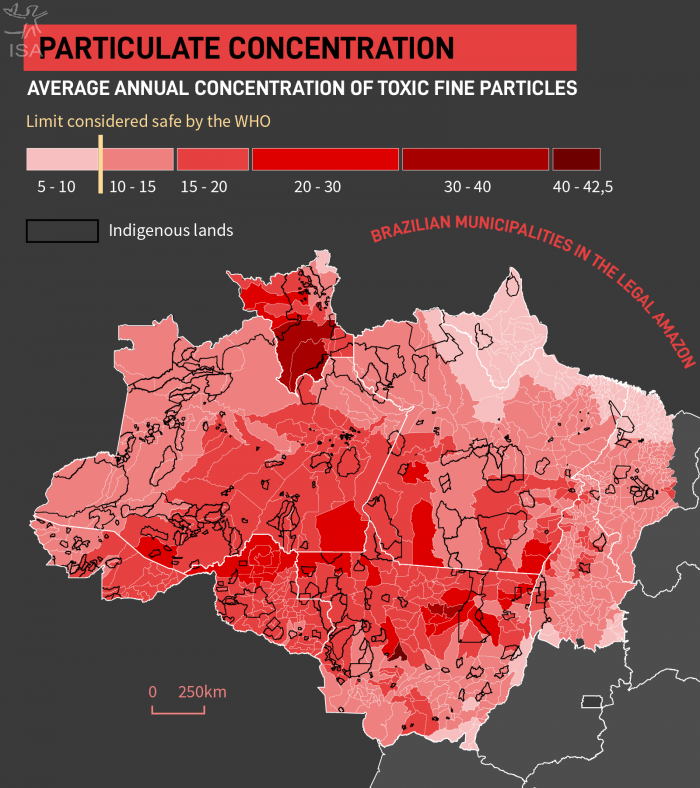
In Nova Progresso (PA), the concetration of these particles (570 µg/m3) reached levels 57 times higher than what is recommended by the WHO. This measurement was taken on 12/08/2019, two days after the so-called “Day of Fire”, when farmers around the BR-163 started fires in support of president Jair Bolsonaro (no party affiliation). Nova Progresso is one of the closest municipalities to this route.
Not by chance, hospital admissions of indigenous people with respiratory problems remained above average in 2019. For indigenous people over 49, admissions were the highest in the historical series (since 2010). There are above average admissions in western Rondonia and Mato Grosso, Marcelândia/MT and Nova Xavantina/MT, São Félix do Xingu/PA, Bannach/PA, Novo Progresso/PA, Novo Repartimento/PA, Grajaú/MA, Jenipapo dos Vieiras/MA, Manaus/AM, Mucajaí/RR and Cruzeiro do Sul/AC.
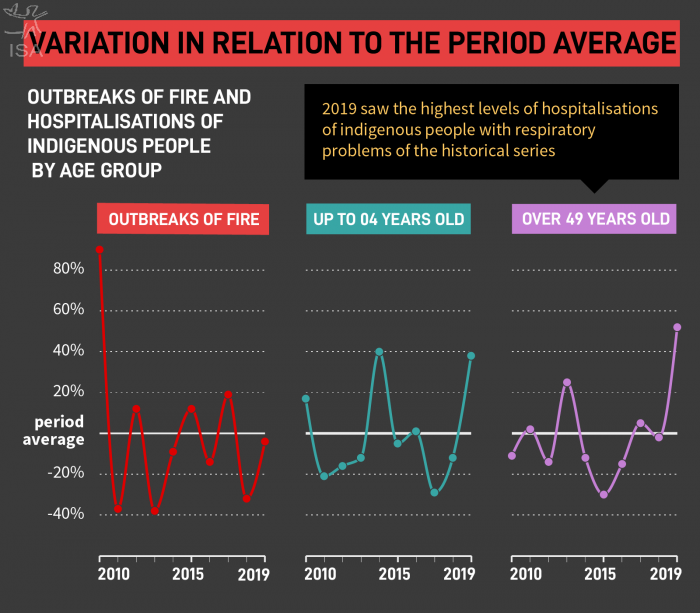
In Rondonia, concentrations of PM2.5 were the cause for 67.6% of hospital admissions of indigenous people for respiratory problems in this age group. In Mato Grosso, there was a 33.6% increase in hospital admissions of indigenous people over the age of 49 in the burning period compared to the previous three months.
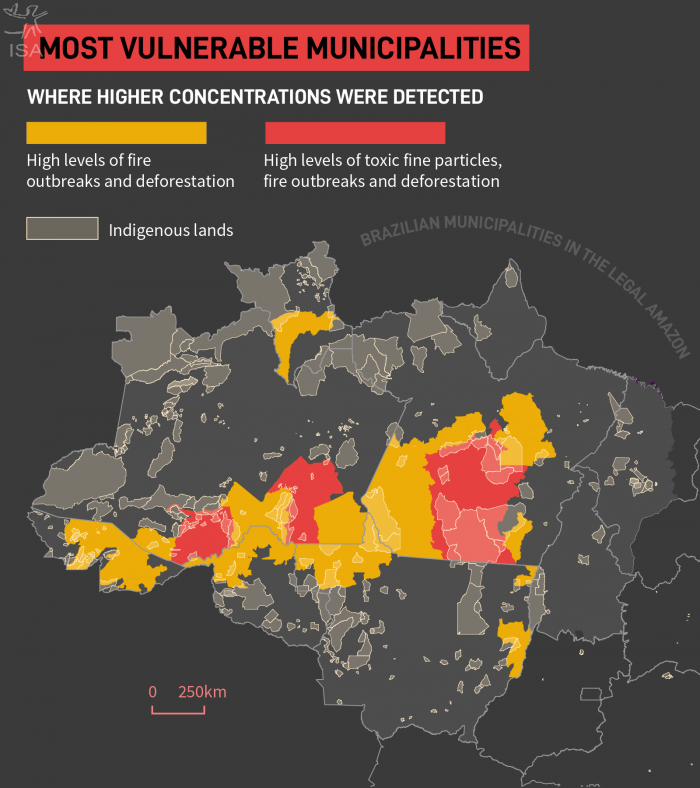
The fires are also related to the high rates of hospital admissions of indigenous children up to the age of four, the study shows. According to Hacon, the fumes can cause asthma in children of up to 5 years old. In addition, repeated exposure can lead to lung failure in children, which will only be noticed years later.
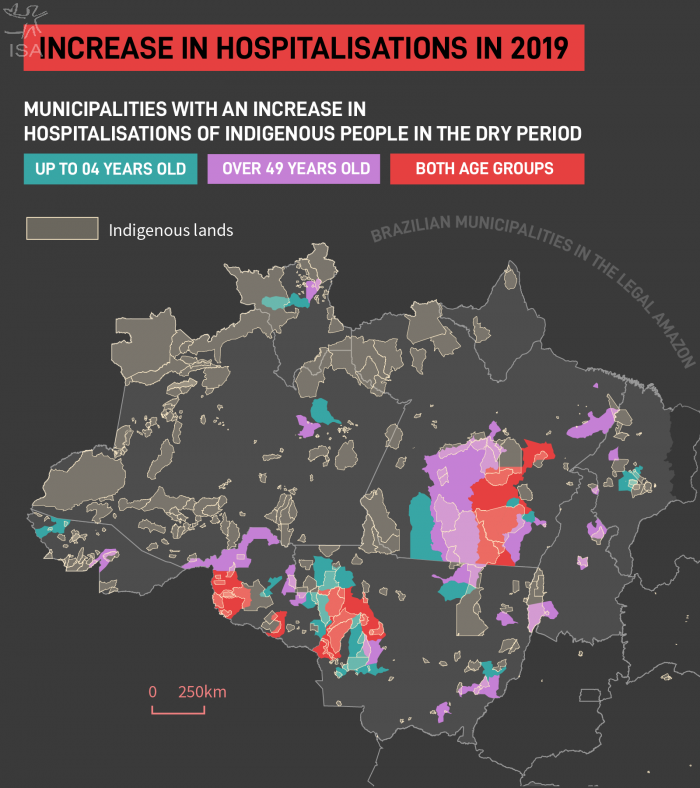
These fires are directly linked to illegal deforestation. The deforester cuts down the forest, leaves it to dry and then burns it to prepare the ground for farming. In 2020, the fire season will be intense, reflecting the high rates of deforestation of the previous year. In the region of Novo Progresso and the axis of the BR-163, the epicentre of the ‘Day of Fire’ in 2019, 3,430 hotspots have been detected in 2020, a 17% increase over the previous year.
To avoid a combination of smoke and an increase of Covid-19, which could be catastrophic, Brazil must resume its role in 2020 as an international leader in reducing deforestation and forest fires. A moratorium on deforestation and burning, combined with strong enforcement, is urgently needed to reverse the upward trend in the destruction of the Brazilian Amazon.
The analysis carried out by ISA is the first national study to show a direct statistical relationship between environmental degradation and indigenous health, revealing a large overlap between hospitalisations associated to long-term exposure to fine particles produced by fires. The results suggest that long-term exposure to air pollution increases the vulnerability of indigenous peoples to the more severe effects of Covid-19. The article will be submitted to the Revista do Sistema Único de Saúde do Brasil (RESS) - Epidemiology and Health Services - for review.
Clara Roman
ISA
Imagens:


